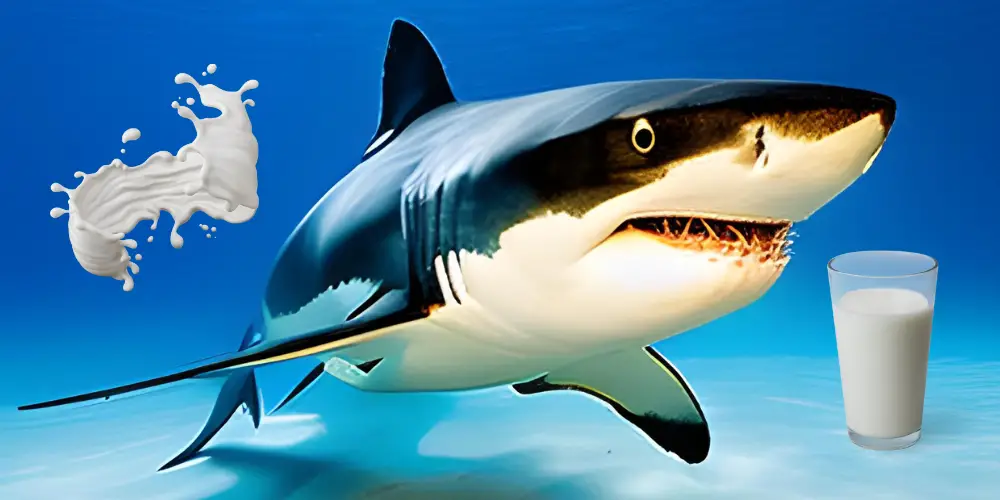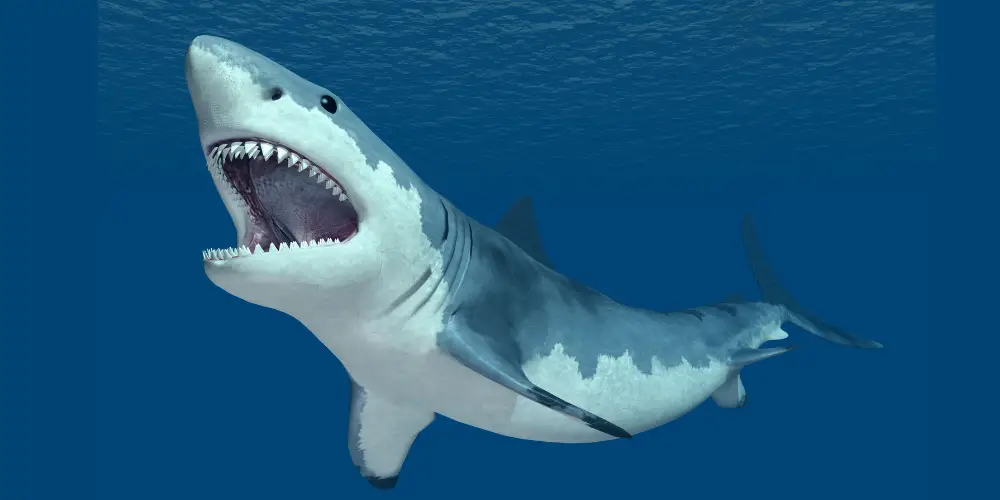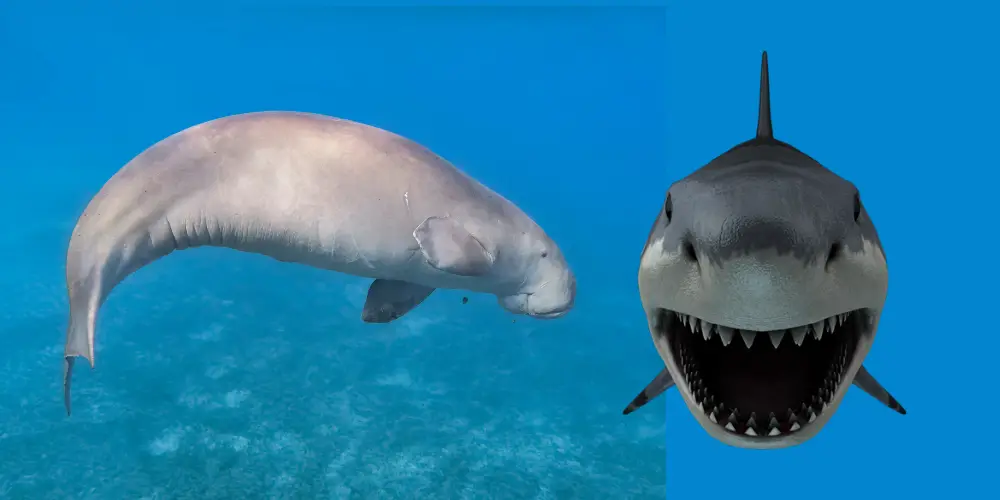The ocean is a world of wonder, filled with various creatures that continue to fascinate us.
Sharks are among the most intriguing, often sparking questions about their biology and behavior.
One question that often arises is, “Do sharks produce milk?”
Sharks do not produce milk. They lack the mammary glands necessary for milk production, a characteristic feature of mammals. Sharks employ different strategies for nourishing their young, but none involve milk production.
This article aims to explore this question and delve into the fascinating world of sharks.
The Shark: A Brief Overview
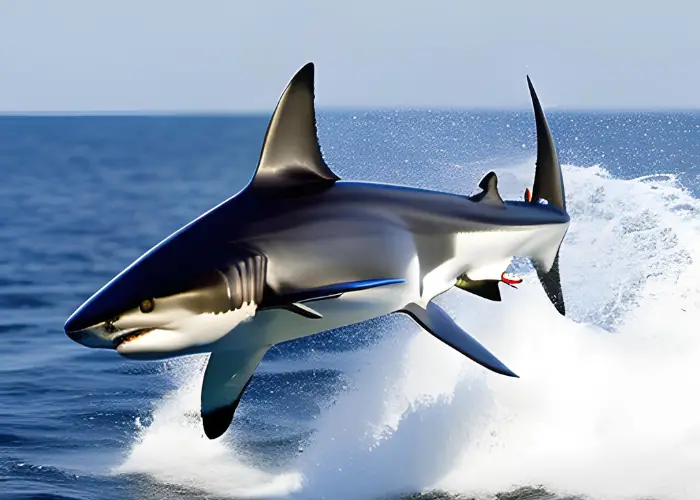
Sharks are one of the oldest and most diverse groups of fish, with over 500 known species ranging from the small dwarf lantern shark to the massive whale shark.
Sharks are known for their impressive predatory skills, but they also exhibit a variety of reproductive strategies. Some species lay eggs (oviparous), while others give birth to live young.
Among those that give live birth, some (ovoviviparous) nourish their young in the womb with a yolk sac, while others (viviparous) have a placenta-like organ that delivers nutrients to the growing pups. More on these later.
Are Sharks Mammals?
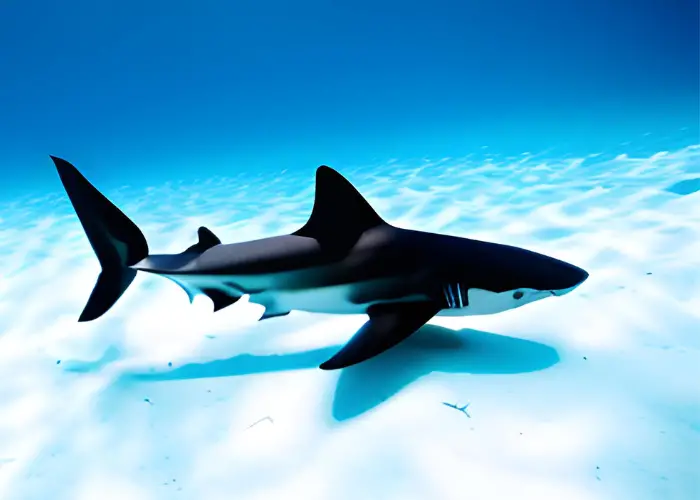
Understanding Biological Classification
Sharks belong to a group of fish known as elasmobranchs, including rays and skates.
These creatures are characterized by a cartilaginous skeleton, a feature that distinguishes them from bony fish.
Unlike the bones in mammals and bony fish, the skeletons of sharks are made of cartilage, a lighter and more flexible material.
Unique Characteristics of Sharks
Sharks are also characterized by having five to seven-gill slits on the sides of their heads, which they use for respiration.
This is a significant difference from mammals, which breathe air using their lungs. Additionally, sharks have pectoral fins not fused to their heads, allowing for a wide range of motion when swimming.
Defining Mammalian Traits
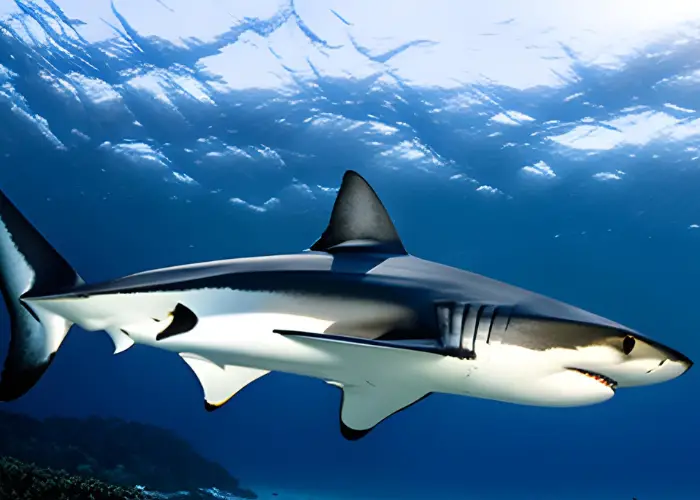
Mammals, on the other hand, are a group of warm-blooded vertebrates within the class Mammalia.
They have several distinguishing characteristics that set them apart from other animals.
One of the key features of mammals is the presence of mammary glands. In female mammals, these glands produce milk, a nutrient-rich substance used to feed their young.
This trait is unique to mammals and is not found in sharks or any other group of fish.
Another defining characteristic of mammals is the neocortex, a part of the brain involved in higher-order functions like sensory perception, cognition, generation of motor commands, spatial reasoning, and language.
Sharks have complex and efficient brains for their ecological niche but do not possess a neocortex.
Mammals also have fur or hair at some stage of their life, a trait that aids in maintaining body temperature, among other functions.
Sharks, in contrast, have skin covered in dermal denticles, which are small, tooth-like scales that provide protection and aid in their movement through water.
Lastly, mammals have three middle ear bones — the malleus, incus, and stapes — that transmit sound from the outer ear to the inner ear.
Like other fish, sharks have a different auditory system adapted to their aquatic environment, with no external ears and only a single ear bone or ossicle.
Mammalian-Like Features in Sharks
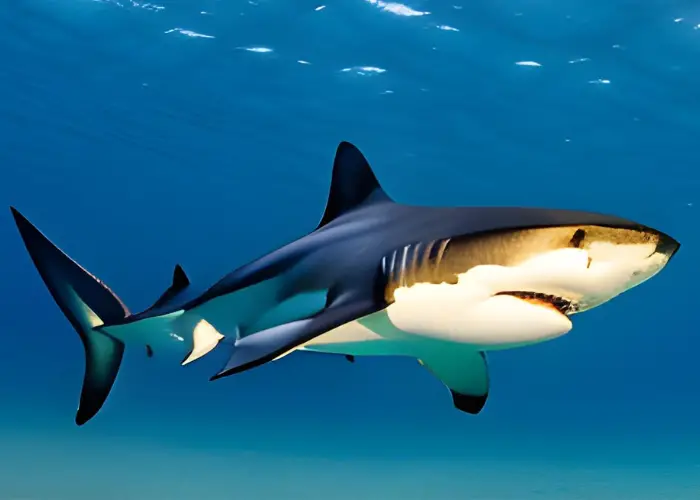
1. Viviparity: Live Birth in Sharks
While sharks are not mammals, they exhibit some mammalian-like features, often leading to misconceptions about their classification.
One of the most notable features is viviparity, the birth of live young. This trait is typically associated with mammals but is also found in some species of sharks.
Viviparity in sharks can take on several forms. Some species, like the lemon shark and the bull shark, exhibit a form of viviparity similar to placental mammals, where the young are nourished through a yolk sac placenta inside the mother’s body.
Other species, like the Great White Shark, practice oophagy, where the developing pups feed on unfertilized eggs produced by the mother.
2. Homeothermy: Warm-Bodied Sharks
Another mammalian-like feature in sharks is homeothermy, or the ability to maintain a stable body temperature, found in some species like the Great White Shark and the Shortfin Mako.
These species have a specialized blood vessel structure, known as a rete mirabile, that allows them to retain metabolic heat and maintain a body temperature higher than the surrounding water.
This trait is more commonly associated with mammals, which are typically warm-blooded.
Sharks Vs. Mammals Comparison Table
| Feature | Sharks | Mammals |
|---|---|---|
| Skeleton | Made of cartilage | Made of bone |
| Respiration | Breathe through gills | Breathe through lungs |
| Body Covering | Covered in dermal denticles (scales) | Have hair or fur at some stage of life |
| Temperature Regulation | Cold-blooded (body temperature matches environment) | Warm-blooded (maintain constant body temperature) |
| Reproduction | Some lay eggs (oviparous), others give live birth (viviparous) | Most give live birth (viviparous), and few lay eggs (monotremes) |
| Feeding Offspring | No milk production, young sharks are typically independent post-birth | Females produce milk to feed their young |
| Brain Structure | No neocortex, but have complex brains adapted to their ecological niche | Have a neocortex, involved in higher-order brain functions |
| Ear Structure | Single ear bone, no external ears | Three middle ear bones, external ears present in most species |
This table compares some of the key features of sharks and mammals, highlighting their fundamental differences.
Despite some surface-level similarities, sharks and mammals are distinct groups of animals, each with unique characteristics and adaptations.
Sharks vs. Mammals: The Verdict
While sharks and mammals may share some basic vertebrate characteristics, they differ fundamentally in several key aspects.
Therefore, despite some misconceptions, sharks are not mammals. They are a fascinating group of fish with their own unique set of characteristics and adaptations.
How Do Sharks Feed Their Young?
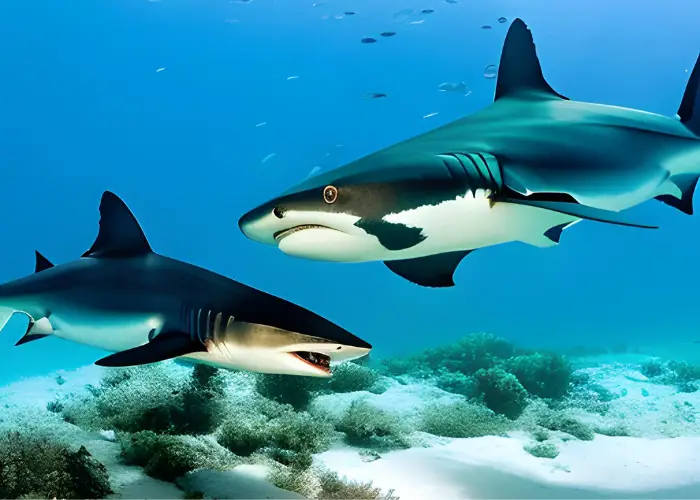
Sharks, known for their diverse biological traits and survival tactics, exhibit various reproductive modes, including how their offspring receive nourishment.
Each category signifies a unique survival strategy, some of which can seem shocking and extreme.
Here are detailed explanations for each type of nourishment in sharks:
1. Ovoviviparity
This is one of the most common forms of reproduction in sharks. In ovoviviparous sharks, the eggs hatch inside the mother’s womb.
However, unlike mammals, the developing shark pups do not receive nourishment from the mother directly through a placenta.
Instead, their primary source of nourishment is the yolk sac within the egg they originated from.
After the yolk is consumed, the mother gives birth to fully developed but miniature versions of adult sharks.
Species such as the bull shark and the lemon shark are examples of ovoviviparous sharks.
2. Oophagy
Derived from the Greek words ‘Oon‘ meaning egg and ‘Phagein‘ meaning to eat.
Oophagy is a unique mode of nourishment where the developing shark pups feed on the unfertilized eggs the mother produces.
This method of nourishment is observed in species such as sand tigers, shortfin mako, and white sharks.
Sand tiger sharks are well-known for their oophagous reproductive behavior, where typically only two pups survive, one in each uterus, after consuming all their siblings and the available eggs.
3. Embryophagy
Also known as intrauterine cannibalism, embryophagy is a rare and extreme form of sibling rivalry.
In this mode of nourishment, the developing shark embryos obtain nourishment by feeding on their unborn siblings.
This survival of the fittest strategy ensures only the strongest or quickest shark pup survives, resulting in a high survival rate post-birth.
4. Placental viviparity
This mode of reproduction and nourishment is similar to mammalian reproduction.
In placental viviparous sharks, the fertilized egg develops into a placenta that attaches to the uterus wall.
The developing embryo receives nutrients directly from the mother via an umbilical cord.
This ensures that the pup has a constant supply of nutrients until birth. The blue and hammerhead sharks are examples of sharks that use this method of reproduction and nourishment.
5. Yolk sac viviparity
In yolk sac viviparous sharks, the embryo’s nourishment during gestation comes from a yolk sac, much like birds.
Once the yolk sac is depleted, it transforms into a structure similar to a mammalian placenta through which the mother supplies the pup with additional nutrients.
After the gestation period, the shark gives birth to live young, fully formed and capable of surviving independently. The basking shark is an example of a shark species with yolk sac viviparity.
Each mode of reproduction and nourishment ensures the survival of shark species in the diverse and often harsh environments they inhabit.
These fascinating and varied modes of reproduction further highlight the sharks’ adaptability and resilience, enabling them to be one of the most successful predators in the ocean.
Sharks and Mammalian Nourishment: A Fundamental Difference
It’s important to note that while these nourishment methods may seem similar to mammalian pregnancy at a glance, they are fundamentally different.
Sharks do not have mammary glands and do not produce milk to feed their young post-birth. Once born or hatched, shark pups are typically independent and capable of hunting and feeding themselves.
Conclusion
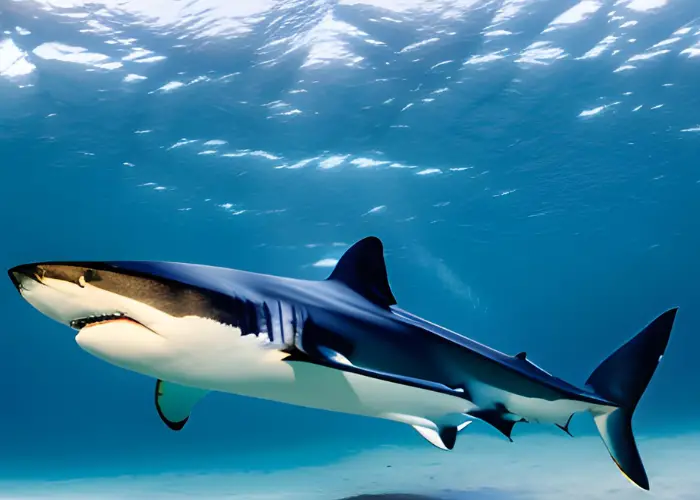
Sharks are a unique group of fish with diverse traits and adaptations. They do not produce milk due to the absence of mammary glands, a defining characteristic of mammals.
Sharks employ various reproductive strategies for offspring survival, from egg-laying to live birth and even intrauterine cannibalism.
Despite some similarities to mammals, such as some species maintaining stable body temperatures, sharks remain distinct. Their existence enriches our understanding of life’s incredible diversity.
So, while the answer to the question, “Do sharks produce milk?” is a resounding “No”, exploring this topic opens up a world of understanding about these remarkable creatures and their place in the ocean’s ecosystem.
For more insights into the world of sharks, check out these articles:
These articles will give you a deeper understanding of these magnificent creatures and their intriguing behaviors.
REFERENCES:
1. Shark. (2023, June 11). In Wikipedia. https://en.wikipedia.org/wiki/Shark

